Which interface should I choose: Thunderbolt, FireWire, or USB? Thunderbolt technology: how it works and what are the advantages
Technology is constantly evolving. The technical capabilities of laptops are changing, appearance, communication connectors. In recent years, Apple technology has received a Thunderbolt port. Every updated laptop has at least one such port. Although it was expected that the thunderbolt will supplant Port USB 3.0, this has not happened yet. Some Apple notebook models are equipped with only new ports, which is not convenient to use. What are the benefits of Thunderbolt?
The first name of this interface is Light Peak. This is Intel's development jointly with Apple. Why and why is it needed? This standard is not just a new optical interface for external devices, it connects to a serial stream PCI Express and Display Port. This ensures a high data transfer rate. The interface supports high-precision time synchronization. This is the main requirement of peripheral audio and video technology.
How it works?
Now video cards with PCI (or PCIe) - Express interface are used. Integration into the system of controllers goes in two ways: direct connection to PCI lanes Express processor (Ivy Bridge or Sandy bridge). Or communication with the PCH chipset via the PCIe line. Data from Display Port and PCIe enter the controller separately, then move together along the cable and diverge at the output. The cost of the cable is high due to the fact that it is active. Each end of the cord is equipped with a low power transmitter chip. Transmitter chips amplify the transmitted signal.
The developer company found that the cable gives high speed not only with fiber optic cable, but also with copper. The technology also supports hot-plugging like the FireWire interface. Connect in one daisy chain up to 6 devices, of which there can be two monitors with Display Port ... For daisy chaining, devices must have two Thunderbolt ports. A device with a single port is set as closing, since it will not be possible to transmit a signal through it.
The port has a physical alignment with the Mini Display Port, there will be no difficulties when connecting. The interface is equipped with two data lines, both transmit signals in both directions at speeds up to 10 Gbps. One line is used to transfer information between equipment, and the second is used for screen signals.
Every laptop released by Apple recently has one or more Thunderbolt ports. The body of the gadget is equipped with them on both sides closer to the hinges. If the laptop has only one single port (or all) and it is a Thunderbolt standard , then an additional adapter is indispensable. An adapter may be needed to connect an external video card. This simple manipulation will improve the graphics capabilities of Apple. MacBook Air 11 ″ Mid-2013. If you want to connect a TV to a laptop, then you can do this through the HDMI connector. If it is not there, an adapter will come to the rescue again.
Belkin Express Station

This is a device connected via a Thunderbolt port, allowing you to connect up to eight pieces of equipment. The connection is via FireWire, USB, Ethernet and Thunderbolt daisy-chain. With such a tool, you don't need additional adapters. The tool allows you to get a high speed of information transfer. Versatile to use. The design of the device is minimalist, stylistically fits all gadgets Apple... The Belkin Express Station transmits large amounts of information quickly and in high quality.
Comparing USB 3.0 to Thunderbolt
Despite expectations, the USB standard has not been supplanted. On the contrary, it is popular. But with the advent of the Thunderbolt interface, the technical capabilities have expanded, albeit at a high price. Time will show how the struggle between these interfaces will develop, but for now let's compare their characteristics.
Main characteristics
Port USB provides high speed data transfer, no cable length limitation. The power is controlled normally, in line with the previous standards. High speed is achieved by parallel auxiliary buses. This increases the transmission speed and allows you to transfer information in full duplex (data is transmitted simultaneously in two directions).
The level of power supply is 1.5 times higher than that of version 2.0 (if the devices are optimized for the standard). If the connectors are not used, they go into power saving modes. This standard will cope with high bandwidth applications.
Port Thunderbolt 2 transfers data at high speed. It is a two-way serial communication interface used to connect displays. Everything is like HDMI, but there is still support for VGA and older analog video. The technology enables hot plugging without overloading the system. It connects monitors, even 4K HD quality. The connector allows you to daisy-chain more than three devices (up to six) without loss bandwidth everyone. Provides 10 watts of power.
Considering the basic characteristics of each interface, one cannot say that one is superior. Both show great promise for future use and development.
Speed indicators

The speed indicators, which will be indicated below, are theoretical, or the maximum possible. In fact, they are lower. The fastest USB 3.0 speed reaches 5GB per second. This is ten times higher than the figure for version 2.0. Suitable for high bandwidth scenarios, even for storing information in a RAID array.
The Thunderbolt connector has four independent transmission lines. So for each connected device, the transfer rate will be 10 GB per second. The second generation is capable of transferring information at a speed of 20 GB per second. This figure is 4 times higher than the speed level of USB 3.0. This high-speed capability is provided by two transmission lines in two directions simultaneously. Therefore, we can safely say that this standard takes precedence over USB 3.0.
Price
Because of its low cost, USB 3.0 is ubiquitous. Manufacturers set this standard on Intel and AMD chipsets. This is a universal standard, which is why almost every device has a corresponding connector. This gives the consumer a wide selection of cables of all kinds. Their price range is within affordable.
This is not the case with the Thunderbolt standard. A laptop that has such a connector is in price category from 1000 dollars. To use this connector, its presence alone is not enough, you need adapted peripherals... They are also not cheap equipment. Even buying adapters, you will have to spend a significant amount. This technology is also more expensive due to the fact that production is not mass-produced. This standard loses out on the criterion of price.
Compatibility
3.0 and 2.0 USB compatible. If you are using a standard cable with an earlier port, then data transfer will follow the highest limit of the lower standard port. This connector is popular and is used everywhere, so you will not have any problems with using it and supporting it with external devices.
Thunderbolt 3 is compatible with the previous two generations: 1 and 2. Native cables can also be used for all generations. To obtain the highest transmission speed, it is necessary that all gadgets in the chain have support for the 3rd generation standard. You can connect a peripheral display with a Mini Display Port directly. However, the Mini Display Port cable cannot be used with an external Thunderbolt device.
Adapters are required to connect other standards such as VGA, DVI and HDMI. The cost of these adapters is high, and it is not easy to find them either. Therefore, the USB 3.0 standard is the most convenient because of its ubiquitous use.
Output

Thunderbolt technology looks far into the future. It is really capable of transmitting data at high speeds. Difficulty in use is largely caused by the inability of other devices to work with the connector. The standard is not used as popularly as USB 3.0, so its production is not delivered to the stream and the cost is high. Interfacing with peripheral devices that do not have the required port is complicated by the additional costs of purchasing adapters. But, if we consider the connection and work with adapted devices, then the interface shows a high result and great potential.
If we consider USB 3.0 as an affordable alternative, then the interface performs well. Today there is already version 3.1, which surpasses its predecessor in terms of performance. At the same time, there is a combination with almost all devices. This allows you not to spend money on additional accessories in the form of adapters. The popularity of the standard also ensures the mass production of both equipment with ports and various accessories at affordable prices.
Nowadays USB 3.1 is considered to be a convenient standard in use. But looking to the future, Thunderbolt 3 sets the bar high. Only with time will we find out which "input" will implement the greatest number of requirements.
- Transfer
Have you already bought yourself a new MacBook or MacBook Pro? Or maybe Google pixel? You are on the verge of confusion with these new USB-C ports. This simple-looking port is fraught with universal confusion, and blessed with backward compatibility, it uses different cables for different tasks. Buyers will have to be very careful when choosing their cable!
USB Type-C: ports and protocols
Ports USB Type-C have spread widely, Google has started using them on their Pixel and Nexus computers and phones, Apple is using them on the 12 "MacBooks and now on the new MacBook Pros. This is the physical specification for the 24-pin reversible plug and associated cables. In this article I will refer to this physical cable and port as "USB-C" as the most commonly used term. Google reports that this port is called "USB-C" 21 million times, "USB C" 12 million times, and correctly, "USB Type -C ", a total of 8.5 million times.
USB-C Compatibility: Multiple protocols supported, and each layer is backward compatible with the layers below
USB-C allows various signals to pass through:
USB 2.0 - Oddly enough, the earliest USB-C devices, including the Nokia N1, only supported USB 2.0 signals and power. Almost all new computers support at least USB 3.0, but some phones and tablets still have limitations.
USB 3.1 gen 1 - very similar to "SuperSpeed" USB 3.0, 5Gbps serial communication for all peripherals from hard drives to network adapters and docking stations. Backward compatible with "SuperSpeed" USB 3.0, "Hi-Speed" USB 2.0, and even the original 1996 USB 1.x! This protocol is used by Apple in its 12 ″ MacBook.
USB 3.1 gen 2 - The confusing name doubles the bandwidth of USB peripherals to 10 Gbps. Backward compatible with all previous versions USB. Only the newest support him USB-C devices... I wonder who only came up with such a name.
Alternate Mode - The physical USB-C connector supports other non-USB protocols including DisplayPort, MHL, HDMI, and Thunderbolt. But not every device supports the Alternate Mode protocol, which is very confusing for buyers.
Power Delivery is not a data protocol, but USB-C can deliver up to 100W of power. But again, there are two different specifications and many different configurations.
Audio Accessory Mode - Specification for use with analog audio.
The main problem with USB-C is confusion. Not every USB-C cable, port, device, and power will be compatible with each other, and there are many combinations to consider. Newer, most sophisticated devices (like the MacBook Pro with Touch Bar) will support most of the different usages of the port, but common older devices only support USB 3.0 and, with luck, Alternate Mode DisplayPort.
But that's not all. Many USB-C peripherals also have their limitations. Introduce USB-C HDMI adapter. It can realize HDMI over USB 3.0, and it can use HDMI's native Alternate Mode. It can also multiplex HDMI with Thunderbolt Alternate Mode, and even theoretically HDMI over Thunderbolt using an external graphics chip! I was the one who advertised the idea of a Thunderbolt Display with an integrated GPU. And only the newest computers will support all three modes. Imagine how confused a consumer who buys a USB-C HDMI adapter would get confused when they find it doesn't work with a MacBook or Pixel or whatever?
Cable nightmare
StarTech Thunderbolt 3 USB-C Cable (40 Gbps)

Monoprice Palette Series 3.1 USB-C to USB-C with PD (10 Gbps, 100 Watts)

Monoprice Palette Series 3.0 USB-C to USB-C (5 Gbps, 15 Watts)

Monoprice Palette Series 2.0 USB-C to USB-C (480 Mbps, 2.4 Amps)
These cables look the same, but their capabilities are very different! (I think Monoprice posted one picture for two different cables)
Cable compatibility issues are even more serious. Many companies, including my favorite Monoprice, make cables USB-C miscellaneous quality and compatibility. If you're not careful, you can restrict or even damage your devices with the wrong cable. Seriously: The wrong cable can damage your device! It shouldn't be like that, but that's how it is.
Some cables with USB-C on both ends can only carry 5Gbps, others are compatible with 10Gbps USB 3.1 gen 2. Others cannot be used for power, or they are not compatible with Alternate Mode Thunderbolt. Look at Monoprice 3.1 10 Gbps / 100-Watt USB-C to USB-C, 3.0 5 Gbps / 15 Watt USB-C to USB-C, and 2.0 480 Mbps / 2.4 A USB-C to USB-C. Why do they even exist? Why do you need USB cable-C to USB-C with only 2.0 support?
And then there are cables with different connectors at the ends. Monoprice sells a cool 10Gbps USB-C to USB 3.0 adapter, but they also have one that supports 5Gbps, and even the limited 480Mbps USB 2.0. And they look almost the same. What a consumer nightmare! Monoprice incorrectly names every 5Gbps cable as USB 3.0 and every 10Gbps cable as USB 3.1. On the other hand, such names are more understandable to the user than the official ones.
I don't run into Monoprice. I love their cables. But their huge assortment of USB-C cables perfectly illustrates the incompatibility issue. Almost all manufacturers and sellers have these problems.
Thunderbolt 3
Let's move on to an even more confusing topic. Mac owners have grown accustomed to the Mini DisplayPort connector since the 2011 MacBook Pro was launched, serving as both a graphics port and a data port. They are also used to sticking a Thunderbolt cable in Mini connector DisplayPort, and detect that nothing is working.The same experience awaits us with the new USB Type-C port:
Not all USB-C ports have the same capabilities. Many are data-only, some are data and video, and very rare are data, video and Thunderbolt 3!
Thunderbolt 3 requires special cable... Although it looks exactly the same as a regular USB-C!
Thunderbolt 3 devices look exactly like USB-C devices - regular USB-C devices are limited to 5 Gbps or less, but Thunderbolt 3 devices transfer PCI Express at 40 Gbps!
Thunderbolt 3 ports and cables must be backward compatible with cables, ports, and USB devices 3.1 Type-C. But they will work slower. Let's praise the creator for backward compatibility... This, by the way, is a simplification. In fact, Thunderbolt 3 is the "Alternate Mode" for the Type-C cable and port, just like HDMI. But in practice, Thunderbolt 3 is a superset of USB 3.1 to USB-C, as there are no USB 2.0-only Thunderbolt 3 implementations.
Therefore, car owners with Thunderbolt support 3 should be careful when buying devices and cables so as not to fly through with the bandwidth. Most of Apple's current USB-C accessories and cables will work with the new MacBook Pro (it's backward compatible), but may not deliver full speed. And the owners of the old 12 ″ Retina MacBook even worse, since devices with Thunderbolt 3 won't work there at all!
Because Thunderbolt 3 includes data and video, it's easy to get confused about the compatibility of computers, cables, and devices. For example, a Thunderbolt 3 cable can support two 4K 60Hz monitors, or even a 5K monitor, while USB-C cable limited to one 4K monitor. It's funny that USB-C Alternate Mode doesn't have the same video compatibility as Thunderbolt 3. The latter supports HDMI 2.0, while USB 3.1 only supports HDMI 1.4b. But in the case of DisplayPort, USB 3.1 will have an advantage, it supports version 1.3, and not just 1.2, like Thunderbolt 3. It all depends on the implementation on a particular machine.
Thunderbolt icon on new MacBook Pro Apple I didn’t do it, which made the consumers even more confused!
Note that there are both 40 and 20 Gbps Thunderbolt 3 cables. And the MacBook Pro is not compatible with the first generation of Texas Instruments Thunderbolt 3 controllers used in many early Thunderbolt 3 devices!
My opinion
Given this insane level of "compatibility" for the new USB Type-C port, buyers will have to be very careful. And if it's a good thing that the industry is moving towards a simple, reliable, two-way port for data, video and power, then this mess of devices and cables will frustrate consumers and annoy technicians.Addition: if stuck, then it should work
I received a lot of criticism of the initial version of the article, and it consists in the fact that everything seems to be not as bad as I am describing. This is mostly true as long as people have USB-only Nexus phones, etc. But it seems to me that there is a problem with the many use cases for this versatile cable and port.Electronics is no longer an area of interest for geeks alone. Most computers, phones, tablets and peripherals are purchased by non-tech-savvy people. They do not distinguish protocol from interface and do not have to understand how “USB Type-C” differs from “Thunderbolt 3” or “USB 3.1”. They want to buy things, connect them, and make everything work. They judge compatibility by the shape and fit of the connectors, not the specifications and logo.
Historically, the industry has dealt with this. After the initial rough edges, USB has become a boon for the average user. Cables, devices, peripherals - most of them just work. Although experience from using USB 3, Mini USB, Micro USB and Chargers high power is not perfect, the user expectation “fits, so it works” is still true for USB today. I myself use a string of cheap USB cables right now. And the reason is that USB was both a cable and a protocol. Power aside (how many iPads are slow to charge from iPhone cubes?) USB worked because USB is USB.
And now there is a "universal" cable that can become the only port on the device. Data, video, power - for just one USB port Type-C. And Intel switched to top gear adding a completely separate world of data and video support, Thunderbolt 3. It's unrealistic to expect all ports, cables, and devices to work properly with each other, especially if it's a lot cheaper to make a USB 3.1 gen 1 or even USB 2.0 device or cable.
From now on (since the launch of Thunderbolt 3 devices) we have a port that doesn't live up to user expectations. The cables are not compatible, the devices do not support any peripherals, although the ports look the same. It's a nightmare: a consumer pulls the wrong cable out of a drawer, store, or backpack and thinks the device or charger is broken when not working. We will face frustrations, returns, and confusing support.
it old story with compatibility. We're improving interoperability to raise consumer expectations that things will just work. But USB Type-C will never just work because USB-C is too many things at once. And this is a nightmare.
Thunderbolt | Now on PC
Mac and PC users will never agree which platform has the best operating system... But as for the hardware, PC owners have a clear advantage here. When choosing processors, video cards and motherboards, we have much more choice. If you're using a Mac, you'll have to wait for Apple to add support for the device you want (if it ever does).
Thunderbolt violated the rule that PCs are the first to get cutting-edge technology. For almost a year now, new Mac owners have been using the interface Thunderbolt which was developed by Intel in collaboration with Apple. Experienced PC users just had to sit and wait, although the lack of products with this interface made the wait noticeably easier.
MSI recently introduced the first motherboard with support for Thunderbolt... The Z77A-GD80 ends Apple's monopoly on the coolest interface since the first USB standard. The board we received is almost identical to the Z77A-GD65 model, which we reviewed in a review of six motherboards on Z77 at a price of $ 160-220, except for the presence of a port Thunderbolt 10Gbps rear I / O (instead of DVI port), along with a new 14-phase voltage regulator.
If you are not yet familiar with the technology Thunderbolt or its implementations, we are sure that you will want to have such an interface in your next system, even though the number of devices with its support is not very large yet.
Thunderbolt is the name of Intel's initiative, which was originally codenamed Light Peak - an optical interface for connecting peripherals. When Intel first introduced Light Peak technology at IDF 2009, the optical interface was thought to provide 10 Gbps throughput. However, the copper-wired version turned out to be better than previously expected and allowed Intel to switch to it, lowering the cost of the end solution and adding power lines for plug-in devices (up to 10 watts).

Most of all, enthusiasts do not like the fact that USB 3.0 already exists as a standard part of the functionality. AMD chipsets and Intel. Why should we pay for another interface? At the end of the day, 5Gbps Gen 3 USB almost matches the peak performance of today's SSDs. but Thunderbolt not just another interface for peripherals. It combines DisplayPort and PCI Express into a serial data stream, allowing for fast connectivity between devices (along with innovative ideas like the MSI GUS II).
Manufacturers have been playing with USB graphics solutions for years, but no one really succeeded in doing so, as USB's unique instruction set was simply not designed to handle high performance graphics I / O. However, the interface Thunderbolt has low latency and high bandwidth, making it a reliable transmission technology with high precision timing, ideal for external video and audio applications.
How does Thunderbolt work?

Two schemes for connecting a Thunderbolt controller in the system
Controllers Thunderbolt integrated into the system in one of two ways: either they are connected directly to PCI lines Express Processors class Sandy bridge or, or communicates with the chipset (PCH) via its PCIe lanes.
It seems to us that in the desktop segment, most motherboard vendors will connect via PCH so as not to occupy lines on the processor, which are mainly intended for discrete graphics. This configuration has the potential to create a bottleneck, since the DMI connection between the processor and the chipset can theoretically handle 2 GB / s streams well in both directions. If you have connected a lot of SATA drives, then the maximum interface performance Thunderbolt may be limited.
In the image above, you can see the DisplayPort data passing between the controller. Thunderbolt and Flexible Display Interface (FDI) on PCH. FDI has its own path dedicated to the transmission of information, and it does not place a load on DMI 2.0.

PCIe and DisplayPort data goes to controller Thunderbolt individually, mixed pass through the cable Thunderbolt and split at the end.

For Thunderbolt you need an active cable, which is why it is so expensive (around $ 50). Each end of the cable uses two tiny Gennum GN2033 low power transmitter chips that amplify the signal through to provide 10Gbps data rates over distances of up to three meters.
Initially Thunderbolt had to transmit data using an optical transmitter and fiber optic cable. But Intel engineers found that the 10Gbps target could be achieved with cheaper copper cable. However, the implementation of the fiber optic option continues, and in the future we hope to see optical cables that allow connecting devices over sufficiently long distances. As we mentioned, the wired version is capable of powering up to 10W devices. When the optical option becomes available, all connected devices will need a separate power supply.

Despite many unique features, many ideas Thunderbolt borrowed elsewhere. For example, it supports hot plugging. And like FireWire, it is designed to be chained with other devices. Systems with controllers Thunderbolt will be equipped with one or two ports, each supporting up to seven devices in a chain, two of which can be DisplayPort-capable monitors. Combinations can be as follows:
- Five devices and two displays with Thunderbolt ports
- Six devices and one Thunderbolt display
- Six devices and one display via mini-DisplayPort adapter
- Five devices, one Thunderbolt display and one display via mini-DisplayPort adapter
Of course, daisy-chaining requires each device (except the last) to have two ports Thunderbolt... So when you attached a display that has no port Thunderbolt(via a mini-DisplayPort adapter), or it has only one port, it will not be possible to transfer the signal further along the chain. Thus, when connecting multiple components, displays should be put in last place.

The connector itself Thunderbolt physically compatible with mini-DisplayPort, so there will be no problems with connection.
Are there any conditions for placing PCIe and DisplayPort data on the same cable? In theory, no. Apple and Intel resolved the output quality issue on early devices through a 2011 firmware update. The interface uses two data channels, each of which is capable of transmitting information at a speed of 10 Gbit / s in both directions. In this solution, one channel is used to transfer data between devices, the other for display signals. And even so, we are talking about 10 Gbps as an official specification. Thunderbolt, since adding the speeds is not quite the right approach.

Thunderbolt | Interface Bandwidth: Comparison with USB 3.0, FireWire and eSATA
According to Intel partners, ultrabooks will use the Cactus Ridge controller with one port due to the low power consumption of the platforms. Enthusiast-oriented desktops and chained devices will use the Cactus Ridge 4C controller. Both Cactus Ridge controller models use four PCIe 2.0 lanes. Previously, it was believed that version 2C would only occupy two lines, but the developer confirmed that this opinion was erroneous.

The Intel Port Ridge controller is also a second generation development. However, it was specially designed for end devices. Such devices must be connected to the end of the daisy chain or used separately. A good example of an end device is the Elgato Portable 2.5 ”SSD with one port. Thunderbolt... And since the interface is capable of powering up to 10 W devices, the additional food not necessary.
But why do we need controller differentiation? Thunderbolt? Intel is trying to make technology more accessible where possible. We've heard that the Light Ridge is around $ 25- $ 30 and the Eagle Ridge is about half that. Port Ridge has one channel removed Thunderbolt used for DisplayPort signals and is essentially half the Eagle Ridge controller. Thus, a single-channel, single-port Port Ridge controller allows vendors to significantly reduce the cost of end devices.
Support for two displays
The Cactus Ridge 4C and Light Ridge controllers use two DisplayPort outputs. On desktop systems, one channel is connected to the on-board graphics of the processor Sandy bridge or . The second is given to a discrete video card. Of course, the ability to connect a second screen is important for high-end systems, so motherboards based on the Z77 chipset will use the Cactus Ridge four-channel controller. The implementation will look a little odd as you need a DisplayPort return cable between the discrete graphics card and motherboard... But this is the only way to establish a second connection to the Cactus Ridge 4C controller.
begs the question, why not just connect the monitor to the video card and not suffer? Because Thunderbolt uses an active cable.
The active cable allows the controller Thunderbolt interact with displays over long distances without compromising signal integrity. However, a long DisplayPort cable is not the best option because after two meters the signal starts to degrade. DVI uses only passive cables, and the resolution and refresh rate decrease as the length increases (that's what DVI extenders are for). Thunderbolt solves these problems and simplifies monitor connection.
| Thunderbolt-enabled platforms | Thunderbolt controller | Thunderbolt ports | Embedded graphics | Discrete graphics | Max. Number of connected displays |
| MacBook Air (Mid 2011) | Eagle Ridge | 1 | there is | not | 1 |
| MacBook Pro (13 ", Early 2011) | Light Ridge | 1 | there is | not | 1 |
| Mac mini (Mid 2011) 2.3 GHz | Eagle Ridge | 1 | there is | not | 1 |
| Mac mini Lion Server (Mid 2011) | Eagle Ridge | 1 | there is | not | 1 |
| MacBook Pro (15 "& 17", Early 2011) | Light Ridge | 1 | there is | there is | 2 |
| iMac (Mid 2011) | Light Ridge | 2 | there is | there is | 2 |
| Mac mini (Mid 2011) 2.5 GHz | Light Ridge | 1 | there is | there is | 2 |
The HD Graphics 4000 architecture engine supports up to three independent displays. Therefore configurations without additional graphics card, but equipped with a Light Ridge / Cactus Ridge 4C controller, provide the ability to control two screens Thunderbolt with the laptop display running.
If your laptop has an Eagle Ridge or Cactus Ridge 2C controller, you can only connect one display Thunderbolt... This is a controller limitation, so even if you have a discrete graphics card, you will not be able to connect a second device with a socket. Thunderbolt .

It is technically possible to connect two displays via Thunderbolt with Intel Integrated Graphics in desktop system, but for this it must meet the following requirements.
- The motherboard must have a Light Ridge or Cactus Ridge 4C controller.
- The motherboard must have a DisplayPort input to route a second display signal.
- The motherboard must have a built-in DisplayPort output (from Intel HD Graphics 3000/4000) that goes back to the input.
Even though connecting the return cable is an extra job, it still makes sense. The cable gives you the ability to control the second screen using discrete graphics card... Without this, connect a monitor Thunderbolt to a high-performance video card is not possible.
Thunderbolt | Thunderbolt 103 Controller Inside
When you use a serial circuit or end device, the controller Thunderbolt provides a PCIe 2.0 x4 connection. However, more flexibility is also provided for multiple attachments. For example, with four devices connected, you can configure the connection as four separate PCIe 2.0 x1 lanes. According to Intel, the Cactus Ridge (2C / 4C) controller can be configured as follows:
- 1 * x4: one device for four lines
- 4 * x1: four devices, one line each
- 2 * x2: two devices, two lines each
- 1 * x2 + 2 * x1: one device per two lines and two devices per one line each
Most often, one device is used, attached to the controller. Thunderbolt, i.e. configuration 1 * x4. However, there are situations where one controller Thunderbolt controls multiple devices.

Thunderbolt | Active cable temperature
You may not have thought external solutions could have temperature issues, but Thunderbolt is literally hot technology.

Infrared image of where the cable is Thunderbolt connected to the motherboard shows that the temperature there reaches 43.30 degrees, even when the device is idle. With active data exchange, the temperature rises to 48.80 degrees.
These results refer to an active cable. Thunderbolt with two Gennum GN2033 chips on each end. When the flow of information passes through the cables, the chips process the data more actively, which is why we get such temperature readings.

Not surprisingly, in more space-constrained environments such as the 13.3 "MacBook Pro, thermal readings are even more alarming. Thunderbolt is in the range of 50 degrees. To the left of it is the FireWire 800 cable. On the other side is the USB 2.0 cable. And while these interfaces appear to emit heat as well, they are actually heated by the cable. Thunderbolt located nearby. Fortunately, only the ends of the cable get hot, and the wires themselves remain cold.
High temperatures will not be a problem for you with a mini-DisplayPort adapter. The display signal is always present in the cable.

So, in comparison with USB and FireWire, cables Thunderbolt pretty hot. But heat is generated only on the plug, which you touch for a short period of time when you disconnect / connect the cable, and the temperature is not so high as to get burned.
Thunderbolt | Treading the Path to High-Speed Interfaces

Despite its not-so-bright PC debut, sheer interface performance Thunderbolt impressive. It delivers roughly 1GB / s throughput and ultra-fast external drives are already becoming a reality. But Thunderbolt not only allows the use of large external drives, but also brings out the PCIe bus of your motherboard, thereby helping to implement innovations that we have already seen to some extent, and those that will no doubt surprise us next year.
Perhaps the biggest disadvantage Thunderbolt is a price that is not very suitable for budget solutions. Seagate GoFlex based adapter Thunderbolt costs $ 190, which is not cheap at all. In comparison, FireWire 800 adapters, which were previously considered expensive, cost in the region of $ 80, and USB adapters 3.0 sells for about $ 30. For such a high price, thanks to Intel controllers Thunderbolt especially considering the fact that vendors of devices based on Thunderbolt do not include cables. Those. get ready to spend another $ 50 just to connect your new toy to the motherboard.
However, Intel representatives argue that the company is doing everything possible to reduce the cost: cheaper controllers are presented. Thunderbolt second generation (Cactus Ridge and Port Ridge), and the company provides subsidies to partners to help cover costs.
Despite their manufacturability and higher performance, enthusiasts should still stick to cheaper storage controllers, SATA-based SSDs and internal graphics cards. Number of tasks that require interface capabilities Thunderbolt still very few. You can get high-speed external storage using JBOD arrays, and most people don't think that the limitations of DVI cables are an issue. At the moment technology Thunderbolt occupies a certain niche in desktop computers by attracting professional audio and video editors who need low latency and high bandwidth to quickly move large amounts of data.

Interface Thunderbolt is perhaps more promising in the field of mobile devices. We love laptops for their portability. But they usually fall short in performance and flexibility. By taking out the PCI Express and DisplayPort interfaces, Thunderbolt makes it possible to add a fast storage device, an external graphics processor and a large monitor to a small laptop that previously could not work with such equipment.
There is no doubt that Thunderbolt compensates for the shortcomings of modern external interfaces. Thanks to the standards on which the technology is based Thunderbolt, outside the case (mobile or desktop), you can do things that were previously impossible.
Thunderbolt is a technology that is used to connect peripheral devices. Intel and Apple worked on the technology, it forms a universal standard for connecting PCs with other peripheral devices. It is a kind of alternative to USB, but improved and more modern.
Thunderbolt - translated as "thunderclap" and is combination of two interfaces DisplayPort and PCI Express. Up to six peripheral devices can be connected to one such port, thereby uniting them into one chain.
Benefits of use and characteristics
The main advantage of the technology is that need disappears using a switch or hub if you need to connect a number of gadgets. Using just one dual-lane port, you can use up to six devices simultaneously while they will not lose in speed or performance. Now the technology is developed to such a level that it can achieve data transfer rates up to 40 Gbps. Taking into account the fact that even the first versions of Thunderbolt were superior in USB speed approximately doubled, the technology is developing rapidly. 
Another feature of the technology is that it allows you to simultaneously receive and transmit data. Using the Thunderbolt connector, you can also connect displays with Mini DisplayPort or with a DisplayPort, VGA, DVI, HDMI adapter using adapters.
The advantages of Thunderbolt at high data transfer rates do not end there yet, as this interface powers the peripheral devices connected through this port. Thereby, eliminating the need for a lot of cables for the user. 
Version comparison
There are now two versions of the Thunderbolt interface - 2 and 3. The earlier version uses the Mini Display Port connector and has less bandwidth, it is limited to 20 Gbps, which is still several times the bandwidth of USB. Thunderbolt 3 is the latest development. The creators left the MDP connector and switched to the more popular USB Type C while still increasing throughput up to 40 Gbps.
All top Apple line(Mac and Mac book) are equipped with Thunderbolt 3 version.
Thunderbolt and Pci Express
PCI Express architecture uses a high-speed bus to communicate and exchange data between various components of a computer. With the help of such an architecture, data flows to the gadget "directly" without any interference, thereby ensuring fast interaction of the components. Thunderbolt in turn using a busPCI carries out a direct connection to it, thereby providing itself with a large bandwidth of information transmission. 
Port Thunderbolt
Many people are wondering which connector to connect a Thunderbolt cable to? In this matter, the developers did not dodge and Thunderbolt is connected to the usual MDP port, which is present on all Macintosh. 
Thunderbolt vs mini Displayport what is the difference
Thunderbolt includes features of PCI Express and mini DisplayPort technologies. Accordingly, with the help of it, you can transfer video of the same quality as through MDP.
Unlike common connectors for transmitting video signals, such as VGA and DVI, Thunderbolt has the best picture quality, and most importantly, the ability to transfer power using a single cable. In turn, the USB interface, which provides power to peripheral devices, does not have the ability to transmit video signals good quality... The only thing USB wins is low cost of production which is why many manufacturers are reluctant to give it up in favor of Taderbolt.
USB and FireWire compatible
Other developers produce adapters / adapters in order to be able to connect devices on the FireWire 400, FireWire 800 and more common USB interfaces. Speed limits appears due to the controllers installed on these devices.
If you connect devices on the FireWire 400 interface, the communication bandwidth will be limited to 400 Mbps. And if the connected gadget uses the USB 3.0 interface, then the speed limit will be 5 Gbps.
It follows from this that when connecting any other device through a special adapter, the bandwidth limit is set by another interface.
Is it possible to connect multiple devices
One Thunderbolt port can connect up to six various devices... This will require that each device has two such ports. One for input, one for serial communication.
Unlike the older one USB interface, at which the data transfer speed drops when connecting a slow gadget, Thunderbolt technology is specially designed in such a way that it can cope with large quantity connected low speed devices without sacrificing speed main channel. 
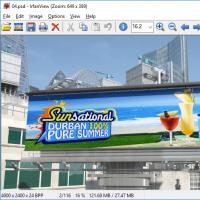 The best programs for reading and editing: do without Photoshop psd extension than open
The best programs for reading and editing: do without Photoshop psd extension than open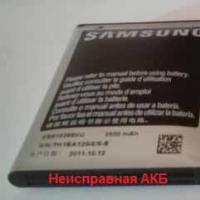 Why is my phone charging slowly?
Why is my phone charging slowly?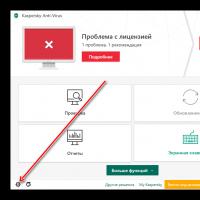 How to add a folder to an exception in Kaspersky How to add exceptions to a program in Kaspersky
How to add a folder to an exception in Kaspersky How to add exceptions to a program in Kaspersky Installing Kaspersky Security Center Installing the Administration Server kaspersky security center 10
Installing Kaspersky Security Center Installing the Administration Server kaspersky security center 10 How to take a screenshot on a computer: All possible ways How to take a screenshot of a photo
How to take a screenshot on a computer: All possible ways How to take a screenshot of a photo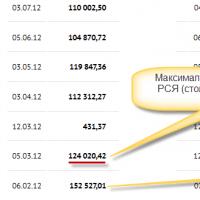 Screenshot - what is it and how to make a screen Ways to take a screenshot on a computer
Screenshot - what is it and how to make a screen Ways to take a screenshot on a computer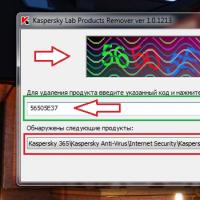 Free renewal of the Kaspersky Anti-Virus license Suspension of protection from Kaspersky Gadget
Free renewal of the Kaspersky Anti-Virus license Suspension of protection from Kaspersky Gadget